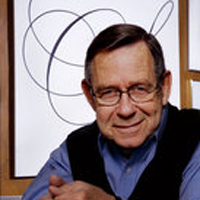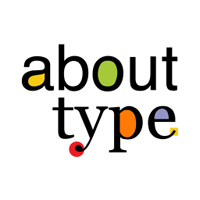
Last weekend the Academy of Motion Picture Arts and Sciences presented its Grammy Awards for Best Recording Package and Best Boxed Or Special Limited Edition Package, there is no sign of an Oscar for Best Movie Poster neither. But the type industry has its own Oscars.
I am not really talking about the numerous Best Of lists that pop up in the first months of each year. The practice of singling out the best typefaces of the past year and gathering them in a list sparked an interesting question on the ATypI e-mail list, which I hope to address at some point. A while ago Ellen Lupton, design thinker and author of Favorite Typefaces. Arguably the most important annual overview of new type, it is a peer-to-peer acknowledgement of typefaces selected by type designers, type thinkers, and type connoisseurs.
Las year's Typography 30 annual, designed by Werner Design Werks, includes the winning selections from entries into the TDC55 Typography Competition, and the winning selections from entries into the TDC2 2009 Type Design Competition.
No, the type design competitions come closest to being the "Oscars of Type". The most important one – and I think the only one that could rightfully claim the title – is TDC2, the annual type design competition organised by the Type Directors Club of New York. This non profit professional organisation celebrates over sixty years in the industry. It is dedicated to educating its international membership and the graphic arts community about type, type design, and its myriad of uses in the field of communications. As is described on their About page,
The Type Directors Club is the leading international organization whose purpose is to support excellence in typography, both in print and on screen.
The TDC2 type design competition is an offshoot of the original TDC competition, which celebrates outstanding achievements in the use of type and the letter form in (graphic) design. The winning entries in the TDC2 competition are presented with a coveted Certificate of Excellence in Type Design. There are a number of (loose) categories that can have a number of winners each – Text Faces, Display Type, Type Systems, and occasionally Pi Fonts (dingbats, icons, pictograms and the like). Quite importantly no rankings are assigned in the TDC competitions; listings are always alphabetical. The professional jury is drawn from several spheres of typographic endeavour: design, production, study, intense use. Where necessary, the jury is advised about non-Latin script entries by the TDC Non-Latin Advisory Board. Over the years the Typography Annuals – in which the winners of both the TDC and TDC2 competitions are reproduced – have become an invaluable resource for designers, observers, and scholars. They serve as important historical records of typographic trends and the state of type design practice.

Detail of a Certificate of Excellence in Type Design from TDC, in this case for Argentinian script master Alejandro Paul's Burgues Script, awarded in the Display category at TDC2 2008.
Thanks to a mutual agreement TDC graciously provided me with an advance copy of the press release and this year's winning entries. Reflecting the current economic climate the entries for the main TDC competition were down slightly by 8%. This is the first year that there were more entries from outside the United States. On the contrary there was an increase in the TDC2 typeface design competition with 9% more entries. Of the 176 designs entered from 29 countries, 16 were selected. The winning typefaces came from seven countries; only one out of five was from the United States.
This year the TDC2 jury included Gail Anderson, Creative Director/Design at SpotCo, one of today's leading entertainment advertising agencies; Gary Munch, type designer and owner of Munchfonts; illustrator, lettering artist, and type designer Daniel Pelavin; and Doyald Young, type designer/typographer/graphic designer/letterer, and author of three celebrated volumes on typography and logotype design. Dave Farey of HouseStyle Graphics, London, was chair.

Looking over the winning entries I personally had the impression that there was a slight emphasis on display faces, and some remarkable designs from the past year seemed to be missing. Honestly a couple of the selected typefaces had me raise an eyebrow. Yet the winning entries of the TDC2 competition are only half the story. There is a fundamental difference with Typographica's Favorite Typefaces for example. Stephen Coles compiles a comprehensive longlist of all the notable typeface releases from the past year. Each reviewer can then choose which typeface from that list he or she wants to single out, but still has the freedom to pick a design not featured in that list.
For TDC2 however the type designers or foundries have to actually submit their type designs to be considered – this is how this type of competition always works. Plus the economic factor comes into play. One contestant told me he restricted himself to three designs because it would have been too expensive for him to submit more. As you can see in the Entry Call and Forms PDF entry fees range from $30 to $65 for single typefaces (one style) to $120 up to $190 for type systems comprising nine or more styles. And there are publication and hanging fees to be considered as well. I suppose – TDC being a non profit organisation – those fees are unavoidable, and indispensable for financing the competition, annuals, and exhibitions.

All this means the selection gives a fine representation of the type production of any given year, but is never complete. So I had no way of knowing who entered, with what typefaces, and which ones had been discarded in favour of something else. Were the (in my opinion) two or three somewhat less good designs still better than the other designs I didn't know of? Had significantly less text families been submitted, or simply not the best ones? Did this year's jury favour display type over text type? Had some good designs been overlooked due to poor presentation? I needed context.
I decided to put out a request via Twitter and Typophile, asking everyone who submitted to send me their PDFs. Not to second-guess the jury or criticise the organisation – this was the furthest thing from my mind – but to help me see the full picture. It helped me tremendously; also in an unexpected way. Suddenly I was approached by contestants, previous laureates, ex-judges and so on who all offered their insights. Although TDC2 is generally well respected within the type design community, there are some minor problems inherent to the very nature of the competition. I think it may be interesting to have a look at them.
A quick note to anyone who is expecting a scandal piece or big reveals; don't hold your breath. I have been writing about type and typography for a couple of years now, and since August 2008 this has become a full-time occupation. Within the type community I have an impeccable reputation, and my spotless record has earned me the trust of all the type designers and foundries I have worked with till now. I would never risk betraying that trust. So I will not reveal the names of anyone who spoke with me in confidence, and will respect the anonymity of the TDC2 entrants. I will consider statements made on Twitter as public.

The first thing to consider is that all entries are anonymous. All typefaces are evaluated without the names of their designers attached to them. This is very important, as it allows the judges to assess the typefaces with an open mind, without bias. However there is a drawback. In some cases it is impossible to make out if a submitted typeface is a new creation by a certain designer, or someone emulating his/her signature style. Though this is very rare, in the past there have been at least two instances I know of where awarded designs were uncomfortably similar to the work of A-list type designers. And an ex-judge revealed that one year the jury had no way of knowing if a specific entry was the newest creation of an A-list type designer, or someone else plagiarizing his curves and shapes. The only way this can be avoided would be to introduce a "qualifying round". One or two type identifiers unrelated to the jury could weed out the lookalikes. Needless to say this would substantially complicate matters. Also the concept of originality can be interpreted very differently from one person to another.
Another important aspect is that there is no standard entry form for the type designs. Stephen Coles remarked on Twitter that the specimen design can make or break a typeface, regardless of the intrinsic quality of its design. Contrary to the beliefs of Kris Sowersby that the design of the specimen shouldn't matter, and of Tiffany Wardle that good type shines through a poor specimen design and vice versa, Stephen has heard from judges who did find it difficult to overlook the specimen. Amongst the things he learned, type designers aren't always good graphic designers (and vice versa), and a bad design can kill good type. A standardised specimen could alleviate this problem.

Somewhat related to this, a one-time TDC2 winner and former judge told me from experience that showy display type tends to get awarded more often than text faces, because the latter rely on subtle details. For example a widely recognised and lauded text face was amongst the entries when he was part of the jury, but the majority of the judges didn't find anything original about this design. This proves that the nuances of text faces are very hard to judge in this context, where designs need to be assessed very fast and amongst very varied other things. Another one-time TDC2 winner and former judge revealed that at one occasion the feedback from a non-Latin expert arrived too late for consideration in the judging, which might account for why a specific non-Latin entry missed selection. The designers were very disappointed by that, as they considered it their best work (and the expert's feedback when it did arrive was very positive, effusive even).
Finally – and this makes perfect sense – the composition of the jury is of crucial importance, and heavily influences the outcome. This is true for any annual contest. Every year there are winners that possibly would not have been awarded any other year. And inversely certain years excellent typefaces are not selected as there are simply too many good entries. However it would be quite unfair to criticise the judges. I wouldn't want to be in their shoes, having to go through 176 different typeface designs in record time, then having to eliminate 90%, and finally discuss the remaining 10%. It must be an arduous and very demanding task. And despite the odd glitch they usually do a good job.

This piece would be incomplete without hearing the voice of dissent. I once discussed type competitions with a type foundry owner and award-winning type designer. He admitted that he is very sceptical towards all competitions in general. Still he submits some of his releases for a number of reasons. Although he personally thinks it is not important if their typefaces win, some of his foundry's designers find it important to get some recognition. Furthermore it is cheap marketing – publicity which smaller foundries otherwise could not effort. And finally, he always hopes for the impartiality of jurors, and consider the designs he enters worthy of mention.
As much as it helps the foundries, I find type competitions very dubious business and overrated gratification schemes. But then again, one might ask what makes a typeface successful? The various bestseller lists show us that sales volume may not be the true mirror for quality, and competitions have been compromised. Is it the real life applications, something that type designers and foundries have no means to influence? Personally I am happy with a project if it fulfils my personal intentions and meets my expectations – it is the best I can hope for, and I am immune towards other opinions. But others are not, and crave for appreciation, feedback, something to move them forward. They just feel hurt by the results of those awards and competitions.

Personally I think that despite its imperfections, the importance of TDC2 is that it celebrates type design, and brings it to the attention of a wider audience. It is not the infallible, definitive list of the best type designs of the past year we'd wish it to be – it is a snapshot, the state of affairs at a precise moment in time. No more, no less. And every year we are equally curious about the list of winners.












